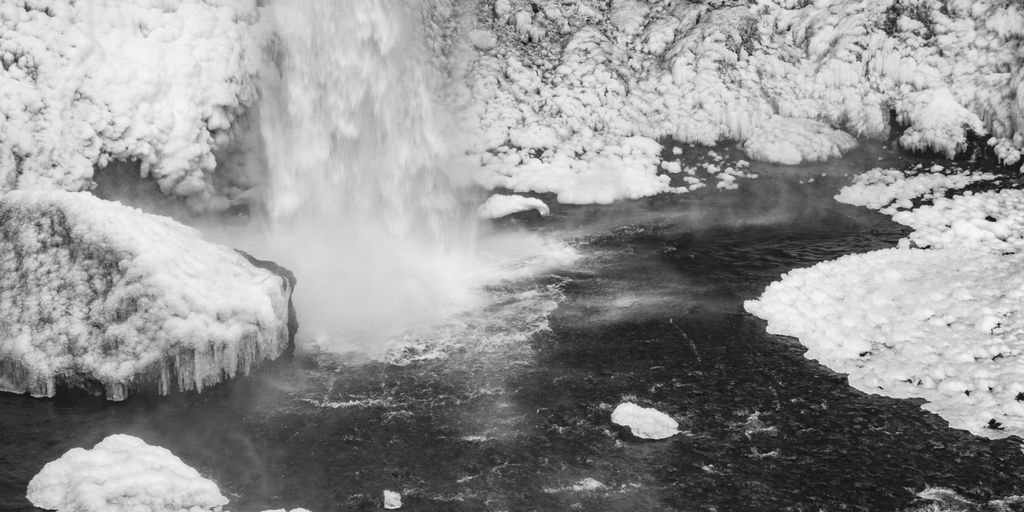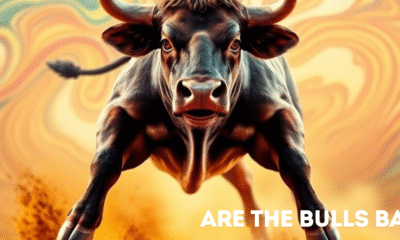Australia News
The Ultimate Iceland Guide: Glaciers, Geysers, and Volcanoes

Iceland is a land of stunning natural beauty, where glaciers, geysers, and volcanoes create a unique landscape that attracts adventurers from all over the world. This guide will take you through the must-see sights and activities that make Iceland a dream destination for nature lovers and thrill-seekers alike. Whether you’re hiking on a glacier, relaxing in a hot spring, or chasing the Northern Lights, Iceland has something for everyone.
Key Takeaways
- Iceland is home to stunning glaciers, with various tours available for hiking, snowmobiling, and ice cave exploration.
- The Golden Circle is a popular route featuring Thingvellir National Park, Gullfoss Waterfall, and geothermal areas.
- Geysers like Geysir and Strokkur are fascinating natural phenomena, with safety tips essential for visitors.
- The Northern Lights offer a spectacular display, best viewed in winter from specific locations in Iceland.
- Reykjavik is a vibrant city with rich culture, offering attractions, dining, and nightlife experiences.
Discovering Iceland’s Majestic Glaciers
Iceland is home to some of the most stunning glaciers in the world. These massive ice formations are not just beautiful; they are also vital to the island’s ecosystem. Here’s how you can explore these icy wonders:
Top Glacier Tours
- Glacier Hiking: Experience the thrill of walking on ice with guided tours available for all skill levels. You can find Iceland glacier hiking, ice climbing, and ice cave tours in Skaftafell and Sólheimajökull, with departures from Reykjavík.
- Snowmobiling Adventures: For those seeking excitement, snowmobiling on glaciers offers a unique way to explore the icy landscape.
- Boat Tours: Take a boat ride on Jökulsárlón lagoon to see floating icebergs and enjoy breathtaking views of the glaciers.
Glacier Hiking Adventures
Hiking on glaciers is an unforgettable experience. Here are some key points to consider:
- Safety First: Always go with a guide to avoid hidden dangers.
- Equipment: Make sure to wear proper gear, including crampons and helmets.
- Stunning Views: Enjoy panoramic views of the surrounding landscapes as you trek across the ice.
Snowmobiling on Glaciers
Snowmobiling is a thrilling way to explore Iceland’s glaciers. Here’s what to expect:
- Speed and Adventure: Feel the rush as you zoom across the snow.
- Guided Tours: Join a guided tour for safety and to learn about the glacier’s features.
- Ice Caves: Some tours include stops at beautiful ice caves, where you can marvel at the blue ice formations.
Exploring Iceland’s glaciers is not just about the sights; it’s about experiencing the raw beauty of nature.
The Wonders of Icelandic Geysers

Geysir and Strokkur
Iceland is home to some of the most famous geysers in the world. Geysir, the original geyser, is mostly inactive now, but its neighbour Strokkur is a reliable performer, erupting every 5 to 10 minutes. Strokkur can shoot water up to 40 metres high, making it a spectacular sight for visitors.
Geothermal Hot Spots
Iceland’s geothermal activity is not limited to geysers. Here are some notable hot spots:
- Gunnuhver Hot Springs: Known for its vibrant colours and steam vents.
- Secret Lagoon: A natural hot spring that offers a relaxing experience.
- Blue Lagoon: A popular spa with mineral-rich waters.
Safety Tips for Visiting Geysers
When visiting geysers, it’s important to stay safe. Here are some tips:
- Stay on marked paths to avoid hot ground.
- Keep a safe distance from erupting geysers.
- Follow local guidelines and park rules.
Visiting geysers is a unique experience, but always remember to respect nature and its power. Enjoy the beauty while staying safe!
Exploring Iceland’s Volcanic Landscapes
Iceland is famous for its stunning volcanic landscapes that attract adventurers from all over the world. The country is home to numerous volcanoes, each with its own unique features and stories. Here are some highlights:
Famous Volcanoes to Visit
- Reykjanes Peninsula: Known for its recent eruptions and geothermal activity.
- Fimmvörðuháls: A popular hiking destination with breathtaking views.
- Askja: A remote caldera with a stunning lake.
- Krafla: Famous for its geothermal power and beautiful surroundings.
Volcano Tours and Activities
When exploring these volcanic wonders, consider joining a tour for a more enriching experience. Here are some options:
- Guided hikes to the craters and lava fields.
- Super Jeep tours for off-road adventures.
- Helicopter rides for a bird’s-eye view of the landscapes.
Safety Precautions for Volcano Tours
Safety is crucial when visiting volcanic areas. Here are some tips to keep in mind:
- Always follow the guidance of your tour guide.
- Wear appropriate clothing and sturdy footwear.
- Stay on marked paths to avoid dangerous areas.
Exploring Iceland’s volcanic landscapes offers a chance to witness nature’s raw power and beauty. Be prepared for an unforgettable adventure!
The Golden Circle: A Must-See Route

The Golden Circle is a popular route in Iceland that showcases some of the country’s most stunning natural wonders. This route is a must for any visitor! It includes three main stops:
Thingvellir National Park
- Historical Significance: This UNESCO World Heritage Site is where Iceland’s first parliament was established in 930 AD.
- Geological Marvel: You can see the rift between the North American and Eurasian tectonic plates.
- Activities: Snorkelling and diving in the Silfra fissure are popular here.
Gullfoss Waterfall
- Stunning Views: Known as the "Golden Falls", this waterfall offers breathtaking views from various angles.
- Powerful Flow: It drops 32 metres in two stages, creating a spectacular sight.
- Accessibility: Easily reachable from the main road, making it a convenient stop.
Geysir Geothermal Area
- Geysir and Strokkur: Geysir is the original geyser, while Strokkur erupts every few minutes, shooting water up to 30 metres high.
- Geothermal Features: The area is filled with bubbling mud pots and steaming vents.
- Safety Tips: Always stay on marked paths and keep a safe distance from the geysers.
The Golden Circle is not just a route; it’s an experience that captures the essence of Iceland’s natural beauty and rich history.
Whether you’re hiking in Thingvellir, marvelling at Gullfoss, or watching Strokkur erupt, the Golden Circle offers unforgettable moments. Don’t forget to explore the leather clothes shops in Reykjavik for some unique souvenirs!
Iceland’s Unique Hot Springs and Pools

Iceland is famous for its natural hot springs and pools, offering a unique way to relax and enjoy the stunning landscapes. Here are some of the most popular spots:
Blue Lagoon Experience
- The Blue Lagoon is a man-made geothermal spa, known for its silica-rich waters that are great for your skin.
- The temperature of the water ranges from 37°C to 40°C (98°F to 104°F), making it perfect for a soothing soak.
- Facilities include a sauna, steam room, and a waterfall for added relaxation.
Sky Lagoon vs Blue Lagoon
- Sky Lagoon offers a more intimate experience with stunning ocean views.
- It features a unique infinity pool that blends into the horizon, providing a breathtaking backdrop.
- Both locations have their own charm, but the Sky Lagoon is less crowded.
Hidden Hot Springs
- For those seeking adventure, Iceland has many hidden hot springs.
- Some popular ones include:
- Gamla Laugin (Secret Lagoon): The oldest pool in Iceland, naturally heated and surrounded by beautiful scenery.
- Seljavallalaug: A free pool located in the mountains, perfect for a quiet dip.
- Gunnuhver Hot Springs: Known for its vibrant colours and geothermal activity, it’s a sight to behold.
Visiting these hot springs is not just about relaxation; it’s about experiencing the raw beauty of Iceland. Each location offers a unique atmosphere and stunning views, making them a must-visit on your trip.
| Hot Spring | Location | Entrance Fee |
|---|---|---|
| Blue Lagoon | Reykjanes Peninsula | 6,000 ISK |
| Sky Lagoon | Reykjanes Peninsula | 6,990 ISK |
| Secret Lagoon | Flúðir | 3,000 ISK |
| Seljavallalaug | South Iceland | Free |
Adventures on the South Coast
The South Coast of Iceland is a treasure trove of stunning landscapes and thrilling activities. From majestic waterfalls to black sand beaches, this region offers unforgettable experiences.
South Coast Highlights
- Seljalandsfoss: A waterfall you can walk behind for a unique view.
- Skógafoss: One of the largest waterfalls in Iceland, perfect for photos.
- Reynisfjara: A famous black sand beach known for its basalt columns.
Glacier Lagoon Boat Tours
Exploring the Jökulsárlón Glacier Lagoon is a must. Here, you can:
- Take a boat tour among floating icebergs.
- Spot seals lounging on the ice.
- Capture breathtaking photos of the glacier.
Hiking Trails and Waterfalls
The South Coast is home to numerous hiking trails that lead to stunning waterfalls and scenic views. Some popular trails include:
- Fimmvörðuháls: A challenging hike with views of glaciers and waterfalls.
- Skaftafell National Park: Offers various trails suitable for all levels.
- Glymur: Iceland’s second-highest waterfall, accessible via a scenic hike.
The South Coast is not just about sights; it’s about creating memories that last a lifetime. Whether you’re hiking, exploring, or simply soaking in the views, every moment is special.
With so much to see and do, the South Coast of Iceland is an adventure waiting to happen!
Northern Lights: A Spectacular Show
Best Time to See the Northern Lights
The Northern Lights, also known as the Aurora Borealis, are best viewed during the winter months, particularly from late September to early April. Here are some key points to consider:
- Clear Skies: Look for nights with minimal cloud cover.
- Dark Locations: Stay away from city lights for the best view.
- Solar Activity: Check forecasts for solar activity to increase your chances.
Top Viewing Locations
Iceland offers several prime spots to witness this stunning natural display:
- Þingvellir National Park: A UNESCO World Heritage site with minimal light pollution.
- Jökulsárlón Glacier Lagoon: The reflexion of the lights on the water is breathtaking.
- Reykjavik: While not ideal, you can still catch glimpses from the city if conditions are right.
Photography Tips for the Aurora
Capturing the Northern Lights can be tricky, but here are some tips:
- Use a Tripod: Essential for long exposure shots.
- Manual Settings: Set your camera to manual mode for better control.
- Experiment with Settings: Start with an aperture of f/2.8, a shutter speed of 10-30 seconds, and an ISO of 800-3200.
The Northern Lights are a magical experience that can leave you in awe. Witnessing this natural phenomenon is a must for any visitor to Iceland.
Reykjavik: The Heart of Iceland
Reykjavík is the largest city in Iceland, but with a population of just around 120,000, it feels quite small and welcoming. This vibrant city is a hub of culture and history, making it a perfect starting point for your Icelandic adventure.
Top Attractions in Reykjavik
- Hallgrímskirkja Church: This iconic church stands tall at 74.5 metres and offers stunning views of the city from its tower.
- Perlan Museum: A fascinating place where you can learn about glaciers and climate change, plus enjoy panoramic views of Reykjavík.
- Harpa Concert Hall: Known for its unique architecture, this concert hall hosts various cultural events and performances.
Cultural Experiences
- Local Festivals: Experience the lively atmosphere during festivals like the Reykjavik Culture Night.
- Art Galleries: Explore contemporary Icelandic art in various galleries scattered throughout the city.
- Live Music: Enjoy live performances in local bars and venues, showcasing both local and international talent.
Dining and Nightlife
- The Lebowski Bar: A fun spot known for its delicious burgers and relaxed vibe.
- Street Food: Try local delicacies from food trucks and stalls around the city.
- Nightclubs: Experience Reykjavík’s nightlife with clubs that stay open until the early hours.
Reykjavík is not just a city; it’s a blend of nature, culture, and history that captivates every visitor.
Whether you’re wandering through its colourful streets or enjoying a meal at a local restaurant, Reykjavík offers a unique experience that reflects the spirit of Iceland. Don’t miss out on this charming capital as you explore the wonders of the country!
Highland Adventures
Exploring Landmannalaugar
Landmannalaugar is a stunning area known for its colourful mountains and geothermal hot springs. This place is a true paradise for nature lovers. Here, you can enjoy:
- Hiking through vibrant landscapes.
- Soaking in natural hot baths.
- Exploring unique geological formations.
Super Jeep Tours
Super Jeep tours are an exciting way to explore the rugged highlands. These tours offer:
- Access to remote areas that regular vehicles can’t reach.
- Guided experiences with knowledgeable drivers.
- Opportunities to see breathtaking views and wildlife.
Winter Activities in the Highlands
During winter, the highlands transform into a snowy wonderland. Popular activities include:
- Snowmobiling on Langjokull Glacier.
- Ice hiking on frozen landscapes.
- Photography of the stunning winter scenery.
The highlands of Iceland offer a unique adventure that combines breathtaking views with thrilling activities. Don’t forget to pack the right footwear for your journey!
Iceland’s Ring Road: The Ultimate Road Trip

The Ring Road is a fantastic way to explore Iceland’s stunning landscapes. This route takes you around the entire country, showcasing everything from glaciers to waterfalls. Here’s what you need to know:
Planning Your Route
- Start in Reykjavik: The capital is a great place to begin your adventure.
- Map out your stops: Include key attractions like waterfalls, geysers, and national parks.
- Consider the seasons: Weather can change quickly, so plan accordingly.
Must-See Stops Along the Ring Road
- Jökulsárlón Glacier Lagoon: A breathtaking spot where icebergs float in a serene lagoon.
- Skógafoss Waterfall: One of Iceland’s largest waterfalls, perfect for photos.
- Reynisfjara Black Sand Beach: Famous for its black sands and unique rock formations.
Tips for Driving in Iceland
- Stay updated on weather conditions: Always check forecasts before heading out.
- Be cautious on gravel roads: Many routes are unpaved and can be tricky.
- Fuel up regularly: Gas stations can be sparse in remote areas.
The Ring Road offers a unique chance to experience Iceland’s natural beauty. Each stop reveals something new and exciting, making it a journey of a lifetime!
Wildlife and Nature in Iceland
Iceland is home to a variety of unique wildlife and stunning natural landscapes. From whales to puffins, the country offers a rich tapestry of life that captivates visitors.
Bird Watching Hotspots
- Lake Myvatn: Known for its diverse bird species, including ducks and geese.
- Látrabjarg Cliffs: A prime location for puffin watching during the summer months.
- Reykjavik: The capital city also offers great birding opportunities in its parks and coastal areas.
Marine Life Encounters
- Whale Watching Tours: Common sightings include humpback whales, dolphins, and even orcas.
- Seals: Often spotted lounging on icebergs or beaches, especially in the Jökulsárlón Glacier Lagoon.
- Birdlife: The coastal waters are rich in fish, attracting various seabirds.
National Parks and Reserves
- Þingvellir National Park: A UNESCO World Heritage site with diverse ecosystems.
- Skaftafell National Park: Home to glaciers and unique flora and fauna.
- Vatnajökull National Park: The largest national park in Europe, featuring stunning landscapes and wildlife.
Iceland’s wildlife is a reminder of the beauty and diversity of nature. Exploring these natural wonders can be a truly enriching experience.
Cultural and Historical Sites
Iceland is rich in history and culture, offering visitors a chance to explore its unique heritage. Here are some key sites to consider:
Museums and Galleries
- National Museum of Iceland: This museum provides a great overview of Iceland’s history from the Viking age to modern times.
- Reykjavik Art Museum: A collection of contemporary art that showcases both local and international artists.
- Saga Museum: Dive into the Viking history of Iceland through life-like figures and interactive exhibits.
Historical Landmarks
- Þingvellir National Park: A UNESCO World Heritage Site, it was the site of Iceland’s first parliament.
- Hallgrímskirkja: This iconic church is a must-see, offering stunning views of Reykjavik from its tower.
- Skálholt: Once the religious centre of Iceland, it has a rich history dating back to the 11th century.
Traditional Icelandic Festivals
- Þorrablót: A midwinter festival celebrating traditional Icelandic food.
- Reykjavik Culture Night: An annual event showcasing local art, music, and food.
- Iceland Airwaves: A music festival that highlights both local and international talent.
Exploring Iceland’s cultural sites offers a glimpse into the island’s rich past and vibrant present. Don’t miss the chance to immerse yourself in its traditions and stories!
Conclusion
In summary, Iceland is a land of stunning natural beauty, filled with glaciers, geysers, and volcanoes that create a unique landscape. Whether you’re hiking on a glacier, zooming across the snow on a snowmobile, or relaxing in a hot spring, there’s something for everyone. The adventures you can have here are truly unforgettable. So, as you plan your trip, remember to explore the many tours available to make the most of your experience. Iceland’s wonders await, and they promise to leave you with memories that will last a lifetime.
Frequently Asked Questions
What are the best ways to explore glaciers in Iceland?
You can enjoy glacier hiking, snowmobiling, or taking a guided tour to see the stunning ice formations up close.
When is the best time to see the Northern Lights in Iceland?
The Northern Lights are best seen from late September to early April, when the nights are longer and darker.
Are there any safety tips for visiting geysers?
Always stay on marked paths, keep a safe distance from the geysers, and be cautious of the hot ground.
What should I wear for glacier hiking?
Dress in layers, wear waterproof boots, and make sure to bring gloves and a warm hat.
Can I visit the Blue Lagoon without booking in advance?
It’s advisable to book your visit to the Blue Lagoon in advance, as it can get quite busy.
What are some must-see attractions on the Golden Circle?
Key stops include Thingvellir National Park, Gullfoss Waterfall, and the Geysir Geothermal Area.
Is it safe to drive on Iceland’s Ring Road in winter?
Driving the Ring Road in winter can be challenging. Make sure to check weather conditions and consider renting a 4×4.
What wildlife can I see in Iceland?
Iceland is home to various birds, whales, and seals, especially in designated national parks and coastal areas.
-

 Business5 days ago
Business5 days agoS&P 500 Soars in Best May in Decades Amid Tariff Relief and Nvidia’s Surge
-

 Immigration5 days ago
Immigration5 days agoTrump’s Immigration Crackdown: Legal Battles and Policy Shifts
-

 Healthcare7 days ago
Healthcare7 days agoAttention Economy Arms Race: Reclaim Your Focus in a World Designed to Distract You
-

 Business5 days ago
Business5 days agoUS Stock Market Soars in May Amidst Tariff Tensions and Inflation Worries
-

 Government5 days ago
Government5 days agoTrump Administration’s Government Reshaping Efforts Face Criticism and Legal Battles
-

 Business5 days ago
Business5 days agoTrump’s Tariffs: A Global Economic Reckoning
-

 Foreign Policy3 days ago
Foreign Policy3 days agoInside Schedule F: Will Trump’s Federal Workforce Shake-Up Undermine Democracy?
-

 Press Release2 days ago
Press Release2 days agoIn2space Launches Campaign to Make Space Travel Accessible for All






























